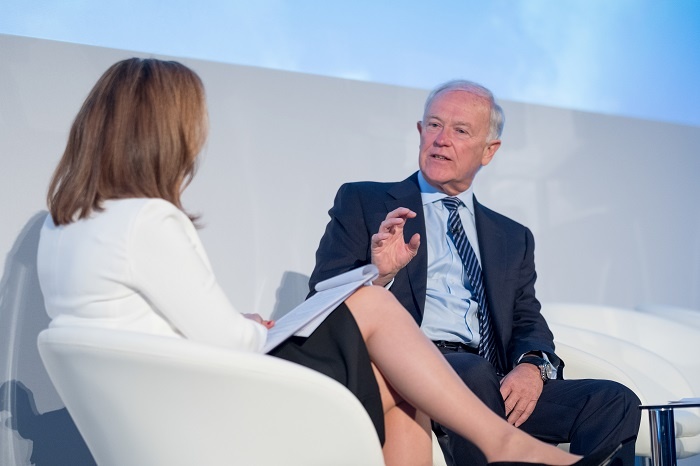
Emirates president Clark warns on rise of low-cost, long-haul carriers
Emirates president Tim Clark has warned legacy carriers that low-cost, long-haul operators are simply a “matter of time”.
Speaking today at the Aviation Festival in London, the industry veteran said the development would be a “great step forward for the industry”.
“We have seen what happened in short-haul with low-cost,” Clark said.
“That had an explosive, nuclear effect on our industry; though for the best. They have done wonders for consumers.”
Clark added that Dubai-based Emirates was aware of the challenge and was confident it could meet the changing demands of consumers.
“I am hoping Emirates will be able to match the low-cost, long-haul carriers in terms of base price, in certain segments.
“We have 93 Airbus A380s, where we have plenty of space to work with, with up to four economy classes, for example.
“This is going to come and we need to be ready to deal with it.”
Clark has previously described the development of low-cost, long-haul carriers as a “gathering storm” for airlines in the Middle East.
However, it would not all be plain sailing for new entrants, Clark warned, with a series of potential challenges ahead, not least aero-politics.
ADVERTISEMENT
The Emirates president pointed to the example of Canada, where the Dubai flag-carrier currently only offers three flights a week.
“They are worried about us,” he said.
“Now, Canada is a huge market, with multiple cities, with a lot of people originating in the Middle East and the markets we served beyond Dubai.
“Yet, they seem to think we are a terrible threat, out to wreck the aviation market in Canada.
“If you have a problem there, what it is going to look like when low-cost, long-haul operators start hitting Vancouver, Ottawa, Calgary and places like that?
“Will they be allowed in?”
Clark also warned incumbent, full service airlines would be working to up their game.
“One of the biggest issues low-cost, long-haul carriers are going to face is that the likes of Emirates are going to examine how they present and how they deliver their products.
“It is clear that with the digital revolution that we are far more capable in stripping out and reconstructing, in this technological environment, to offer what people want in this market.
“We are able to build a proposition to create something new.”
flydubai
Clark’s remarks come as Emirates seeks to integrate its operations with those of flydubai, a low-cost carrier also owned by the Dubai government.
The two carriers recently unveiled an extensive partnership which will see them join forces to offer customers new travel options.
Both will continue to be managed independently, but will leverage each other’s network to scale up their operations and accelerate growth.
“The confluence of these two carriers will create a network of 250-300 destinations, at all levels, from major hubs down to third and fourth tier cities,” Clark explained.
“Their model is essentially low-cost, but it is becoming a little more hybrid.
“They do have business class; they do have a frequent flier programme, lounges etc. They have flat-beds coming in business now as well.
“The assimilation would be far easier than it would be a carrier offering a 29” seat, 12 abreast aircraft on a long-haul flight, for example.”
The two airlines are expected to develop their hub at Dubai International, currently the world’s busiest for international passengers, aligning their systems and operations.
“Putting the two together, I believe, and the Dubai government believes, will create an airline far greater than the sum of its parts.
“We currently have around 17,000 passengers moving between the two carriers a week, up from about 500,” Clark concluded.
More Information
Tim Clark has been a member of the senior management team since the year Emirates launched and was instrumental in transforming the airline from a one-route carrier operating off a dusty runway to a world leader serving more than 150 destinations.
He became president of Emirates airline in 2003 after spending 18 years helping build an aviation empire which owes much to the route networks he established soon after joining as head of airline planning.
He joined Emirates in 1985 after establishing a reputation as a talented route planner during four years at Bahrain’s Gulf Air, which had recruited him from the now-defunct British Caledonian Airways.

